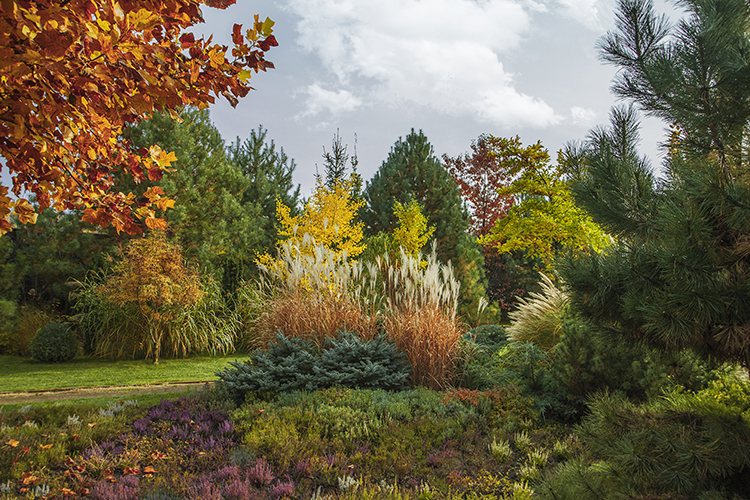
by A Touch of Dutch Landscaping | Sep 28, 2019 | Flowers, Foliage, Gardening, Landscape Design, Shrubs, Trees
Most of us would be hard pressed to find a person who doesn’t love the colours of fall. Yes, winter will inevitably follow fall, and probably earlier than we’d like. But, in the meantime, we’ve still got warm daytime temperatures, cool evenings, and so much colour to enjoy.
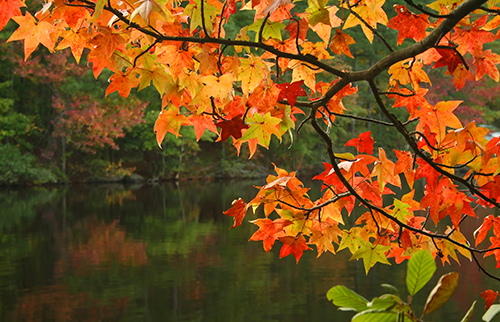 While the trees, plants, and shrubs throughout Southwestern Ontario offer up a lot of colour, many homeowners want colour in their own yards, as well. There are some quick fixes for this – displaying pumpkins, potted mums, and faux leaves and floral décor, for example. However, adding perennial colour to your fall garden takes a bit more forethought.
While the trees, plants, and shrubs throughout Southwestern Ontario offer up a lot of colour, many homeowners want colour in their own yards, as well. There are some quick fixes for this – displaying pumpkins, potted mums, and faux leaves and floral décor, for example. However, adding perennial colour to your fall garden takes a bit more forethought.
When planning gardens, home gardeners generally work in chronological order, considering what’s going to bloom or otherwise be at its peak in spring and then what will be at its best in summer. For this reason, autumn may tend to take a backseat where plant selection is concerned. To prolong the enjoyment of your gardens though, you may want to make room for a few fall favourites in your yard.
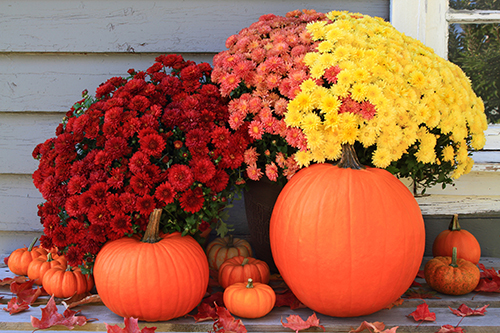 Plant retailers and nurseries might be among your best resources for determining what’s at its colourful peak right now. They tend to sell what’s in season, when it’s in season. And the warm, sunny days, cool nights, and more regular precipitation of early fall can be the perfect time to plant, offering ideal conditions for new plants, trees, and shrubs to take root before the first frost.
Plant retailers and nurseries might be among your best resources for determining what’s at its colourful peak right now. They tend to sell what’s in season, when it’s in season. And the warm, sunny days, cool nights, and more regular precipitation of early fall can be the perfect time to plant, offering ideal conditions for new plants, trees, and shrubs to take root before the first frost.
A few selections that fare well in our region in the fall include:
- Burning Bush (Euonymus alatas) – normally green deciduous foliage turns vibrant red
- Wayfaring Tree (Vibunum Lantana)
- Sugar Maple (Acer Saccharum) – foliage turns orange and red
- Mountain Ash (Sorbus) – foliage turns orange, red, and yellow
- Witch Hazel (Hamamelis) – foliage turns bright yellow
- Butterfly Bush (Buddleia) – flowers in fall, showing purple, blue, pink, and white
- Chrysanthemum (C. x morifolium) – fall flowers in yellow, orange, purple, red, burgundy, white, and bronze
- Purple Coneflower (Echinacea Purpurea) – large purple flowers and prominent seed heads
- Coralbells (Heuchera) – flowers throughout the season, leaves can show purple/bronze
- Rosemallow (Hibiscus Moscheutos) – large, saucer-like blooms are pink, blue, or purple
- Sedum Autumn Joy (Sedum spectabile) – flower clusters are generally pink or light purple
- Goldenrod (Solidago spp.) – bright yellow, flower clusters
Keep in mind though, that your plants and trees need a bit of TLC in order to get established before the first frost. Otherwise your investment of time and money may be for naught. If you’re not getting ample rainfall, you should water new plants thoroughly and consistently to help roots get established before the ground freezes. And ensure you get everything into the ground before the snow flies, as plants will have a much better chance of surviving the winter there than in the thin, plastic pots in which they’re generally sold.
 Once plants are in the ground, most of the initial growth is going to take place below the soil, which is good. So, don’t be disappointed if you see much going on above ground. Your patience will be rewarded with healthy, showy plants next year. To help things along and protect vulnerable young root systems, add a thick layer (4 inches) of mulch around plants. Mulch will add much needed insulation to keep heat in and cold out.
Once plants are in the ground, most of the initial growth is going to take place below the soil, which is good. So, don’t be disappointed if you see much going on above ground. Your patience will be rewarded with healthy, showy plants next year. To help things along and protect vulnerable young root systems, add a thick layer (4 inches) of mulch around plants. Mulch will add much needed insulation to keep heat in and cold out.
Although fall is a great time for planting, there are some exceptions. Evergreens need more time to adjust and build up stores of moisture. If not, they may dry out over the winter when the ground is hard and water supply is cut off. Also, some plants and shrubs sustain a bit of damage throughout the winter. A newly planted specimen may not be sufficiently established to handle the first winter, and may not make it through.
And finally, if you’re wanting to press your luck by planting something that is not ideally suited to your hardiness zone (Southwestern Ontario ranges anywhere from Zone 5 to 7), it will have a much better chance of surviving our winters if planted in spring and given a full growing season to acclimate.
Although many homeowners will start putting their gardens to bed for the year, plants are still growing and thriving in the early to mid-fall conditions. Take advantage of this time to change up your gardens, adding splashes of fall colour not just for this year, but for years to come.

by A Touch of Dutch Landscaping | Jun 4, 2019 | Flowers, Landscape Design, Native Plants, Shrubs, Trees
Native plants are those that have thrived in their original region for centuries. Just like native animals, they have evolved over the years to adapt to changes in their environment.
In the last half of the twentieth century, the ever-burgeoning global marketplace opened people’s eyes to foreign and exotic varieties. Increasingly, hybrids of non-native species were created to adapt these plants to different climates.
However, in the last 15 – 20 years native species are making a comeback for several reasons.
It’s not an all-or-nothing proposition
Native varieties can generally be planted with non-native plants, assuming their sun, water, and soil requirements are similar. And the wide range of native species available means you can always find one or more that suits your gardens’ style, whether traditional, contemporary, or somewhere in between.
Enjoy your garden without having to tend to it all the time
Native plants tend are generally well adapted to their environment. So as long as you’re planting them in their preferred surroundings in terms of exposure to sun, precipitation, and soil type they should require little if any maintenance, especially once established.
Invite beneficial wildlife into your yard
One of the major reasons that native gardening is regaining popularity is its ability to attract pollinators like birds, bees, and butterflies. Native vegetation offers nutritionally-appropriate food as well as shelter to some of your region’s wildlife.
They don’t call them hardiness zones for nothing
Because your region’s original plants have evolved in your climate, they have developed certain immunities that make them more resilient in the face of pests and disease.
They’re just as beautiful and varied as their imported counterparts
While many perceive some native plants and wildflowers to be weedy and undesirable, there’s an extensive range of plants, trees, and bushes that have showy, colourful flowers and foliage, bright berries, and subtle fragrance.
If you’re interested in adding more native content to your garden, the following are some of the more popular native species, divided into five categories.
Trees
 While our country is known for the maple leaf, there are actually more than 150 varieties of maple throughout the world and only a handful of them are indigenous to Canada. But we’ve got more than just maples trees in our backyard. The range of native coniferous and deciduous trees in our region is quite diverse, each with its own unique traits.
While our country is known for the maple leaf, there are actually more than 150 varieties of maple throughout the world and only a handful of them are indigenous to Canada. But we’ve got more than just maples trees in our backyard. The range of native coniferous and deciduous trees in our region is quite diverse, each with its own unique traits.
Among our native deciduous tree species are the Ironwood, Cottonwood, and Oak, while coniferous native trees include White Cedar, Red Pine, and both Black and White Spruce.
Shrubs
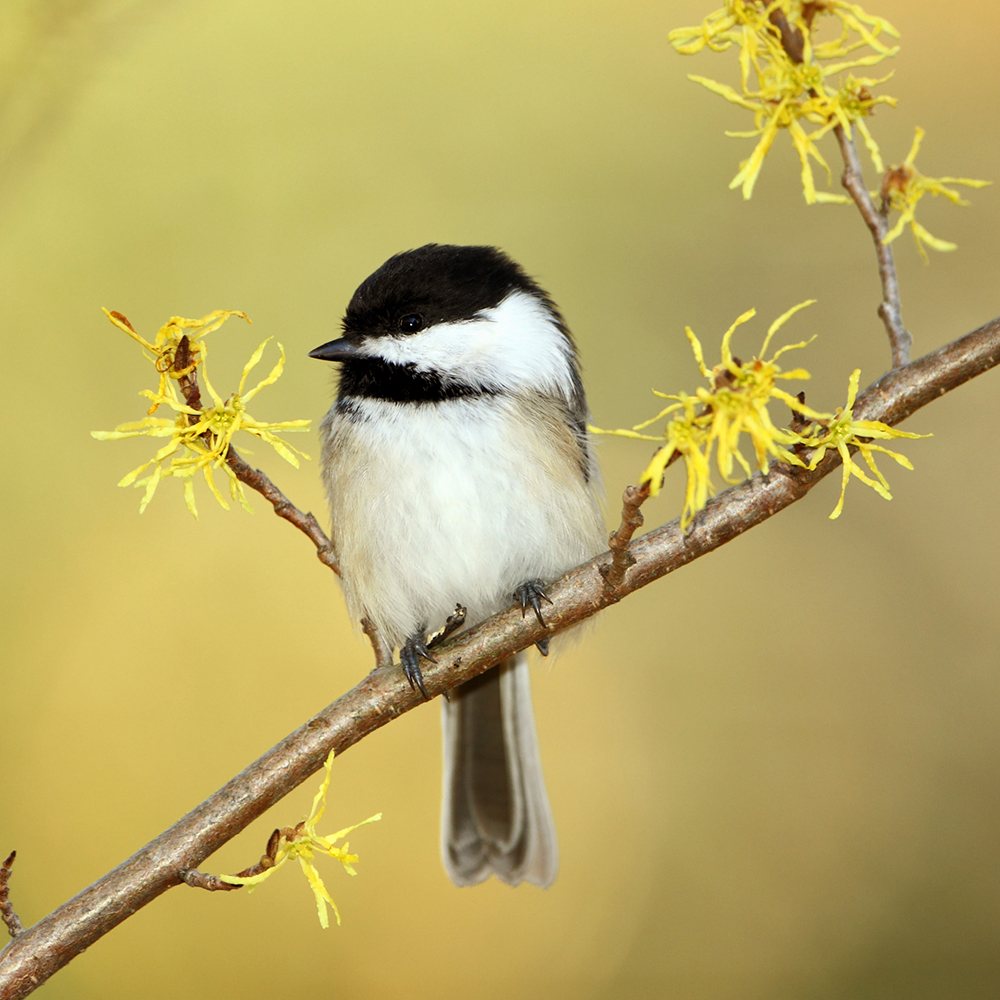 Our region offers some beautiful native shrubs that will add colour and texture to any landscape. Foliage ranges from bright green and smokey-blue, to purple and brilliant red, depending on the season. Many shrubs have a flower phase as well, temporarily enhancing its natural beauty and fragrance.
Our region offers some beautiful native shrubs that will add colour and texture to any landscape. Foliage ranges from bright green and smokey-blue, to purple and brilliant red, depending on the season. Many shrubs have a flower phase as well, temporarily enhancing its natural beauty and fragrance.
Varieties include the Honeysuckle Bush, whose flowers attract hummingbirds, bees, and butterflies. The Serviceberry is a popular native choice, covered in small white flowers in the spring and changing to brilliantly-coloured foliage in the fall. Witch Hazel shows green foliage throughout the summer and, after leaves begin to drop in the fall, shows off unique, bright yellow flowers.
Perennials
 Ontario’s hardy perennials are not only resilient but showy as well. Some are low-lying ground cover while others grow tall, which means it’s easy to create a stunning perennial garden consisting solely of native plants.
Ontario’s hardy perennials are not only resilient but showy as well. Some are low-lying ground cover while others grow tall, which means it’s easy to create a stunning perennial garden consisting solely of native plants.
Choose from brightly coloured Echinacea and Black-Eyed Susan, or pretty purple-pink Border Phlox. The fragrant Bee Balm’s flowers attract pollinators in the summer while its seed heads are a food source for birds in the winter. The Blanket Flower (in the Aster family) has sunshiney red and yellow flower heads, and Columbine can add a modern look to your garden with its long-stemmed nodding flowers.
We’d be remiss if we didn’t mention Ontario’s floral emblem, the Trillium. The beauty of this groundcover is in the simplicity of the flower. And contrary to popular belief, it is not illegal to pick a Trillium, but it’s not advisable as plants are easily damaged and difficult to successfully transplant.
Edible Fruit
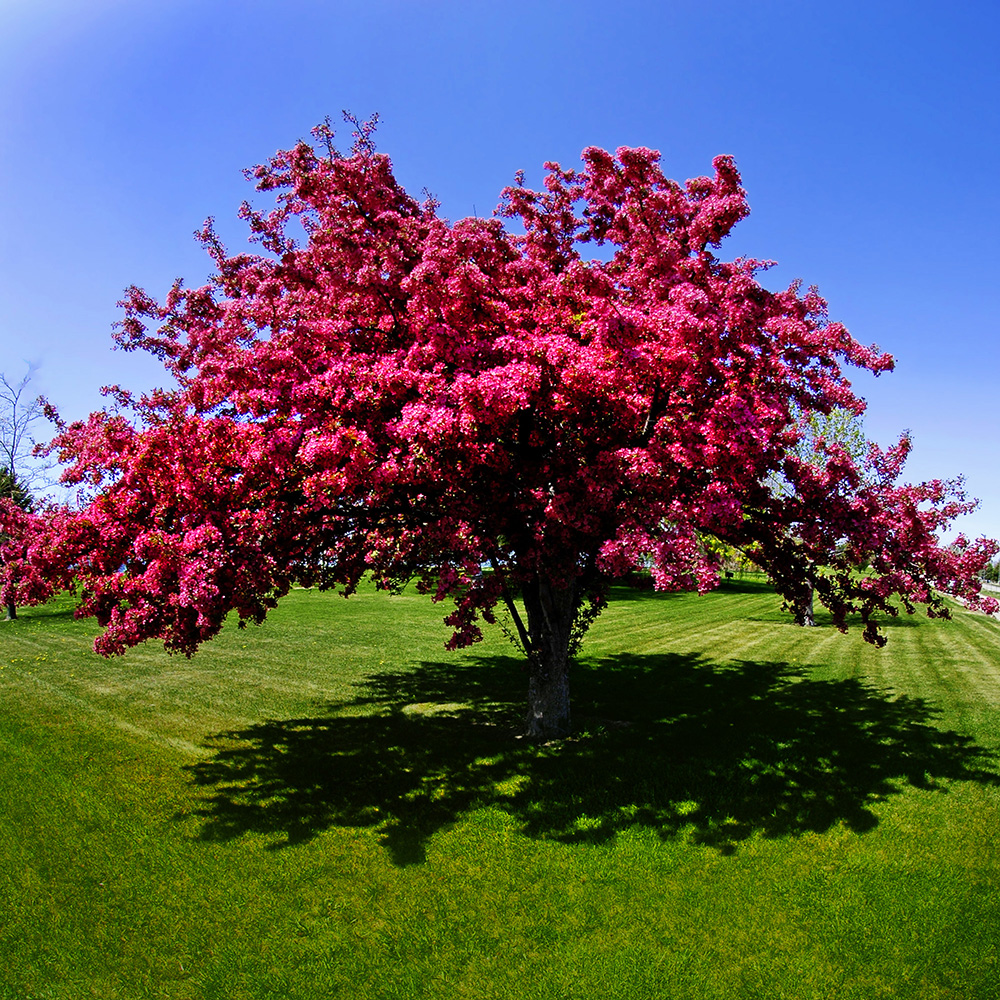 There are so many options when it comes to choosing edible fruit-bearing plants and trees native to Ontario. Various hard fruit trees like apple and crabapple varieties thrive here because they’re native to the region. Elderberry and raspberry (black, flowering purple, wild red) bushes are also native to our region and yield delicious fruit than can be eaten out of hand or baked into a multitude of desserts. The fruit of the Sumac is interesting as the berries are used as a seasoning.
There are so many options when it comes to choosing edible fruit-bearing plants and trees native to Ontario. Various hard fruit trees like apple and crabapple varieties thrive here because they’re native to the region. Elderberry and raspberry (black, flowering purple, wild red) bushes are also native to our region and yield delicious fruit than can be eaten out of hand or baked into a multitude of desserts. The fruit of the Sumac is interesting as the berries are used as a seasoning.
Ferns & Grasses
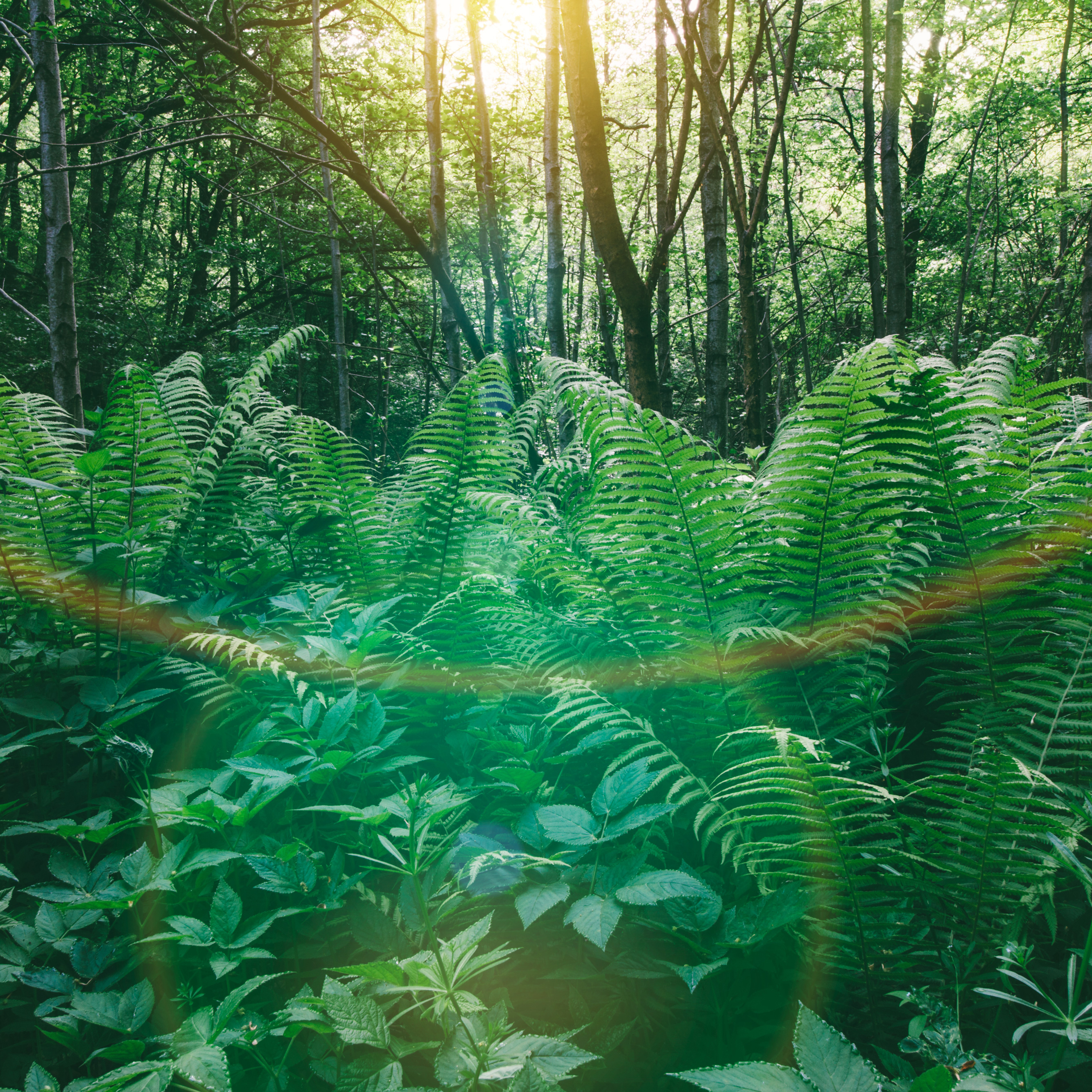 Suffice it to say that if you’re looking for native ferns and/or grasses in our region, your options are wide open. The Ostrich Fern is one of the most popular native ferns but it’s really just the tip of the iceberg. Regardless of which fern you choose, just ensure it’s planted in part to full shade with consistently moist soil. If you prefer grasses, there are myriad native varieties, both long and short. Many flower in the late summer/early fall and provide great visual interest in the winter as well.
Suffice it to say that if you’re looking for native ferns and/or grasses in our region, your options are wide open. The Ostrich Fern is one of the most popular native ferns but it’s really just the tip of the iceberg. Regardless of which fern you choose, just ensure it’s planted in part to full shade with consistently moist soil. If you prefer grasses, there are myriad native varieties, both long and short. Many flower in the late summer/early fall and provide great visual interest in the winter as well.
Gardening with native plants is not difficult. Not only are the plants, shrubs and trees easy to find at nurseries throughout the region, they’re even easier to incorporate into any landscape. If you’re interested in achieving a more beautiful native garden that attracts pollinators but you don’t want to do it yourself, contact A Touch of Dutch Landscaping & Garden Services.

by A Touch of Dutch Landscaping | Dec 5, 2018 | Foliage, Hardscaping, Native Plants, Shrubs, Trees
Most of us here in Southwestern Ontario prefer the warmer months. But when the snow falls it’s nice to still be able to enjoy your outdoor landscape, even from indoors. Visual interest in winter doesn’t have to come just from urns, wreaths, and garland that gets taken down shortly after Christmas. Hardscaping and plants provide cold-weather beauty that lasts the all season long. Below, we explore various landscaping options whose function and good looks extend well past our patio-dwelling days.
EVERGREENS
Conifers are typically top of mind when a landscaper wants to add year-round life to a garden because most keep their foliage throughout the cold months. They come in a wide range of sizes, shapes and shades of green that will compliment any home’s exterior. Some of the more popular conifers in our region are from the pine, spruce, and fir groups. And while they come from a different conifer family, cedars, cypress, and junipers, with their splayed branches, aromatic wood, and interesting bark, are also very popular.
But there’s more to evergreens than just needles and cones. Other conifer families are broad-leafed and/or fruit-bearing. These shrubs tend to have an appearance that more closely resembles a deciduous plant, but they don’t shed their leaves. Beautiful examples of broadleaf evergreens that thrive in the hardiness zones of Southwestern Ontario are Euonymous, Boxwood, and the festive favourite, Holly.
Beyond conifers, there are many trees and plants that brown or lose their leaves every year that can add structure and interest to the outdoors.
Ornamental grasses are a great example of plants that turn brow but maintain their structure through the winter and make a lovely, wispy addition to a winter landscape.
Purple Coneflower, Black-Eyed Susan, Hydrangea, and Autumn Joy Sedum shed their foliage but maintain flower stalks and/or seed heads that look beautiful under a blanket of snow.
Mountain Ash, Canadian Serviceberry, and Winterberry (a popular Holly variety) are great choices for adding pops of colour to your winter landscape. Tip: Holly berries will only form if male and female plants are established together, so be sure to purchase one of each to avoid disappointment.
Many trees offer visual interest with noteworthy texture or colour. Birch trees have a white, papery bark whose beauty is revealed after it sheds its canopy of leaves in the fall.
Stems and twigs can provide bursts of colour ranging from bright green to orange and red. In our region Dogwoods are a common shrub that add vivid colour against the white snow. And a funny-looking tree with a funnier name – Harry Lauder’s Walking Stick – adds twisty, highly textural support for freshly fallen snow.
HARDSCAPING
Don’t discount stone structures and fixed furniture as difference makers where visual interest is concerned. These hardscaping elements can add colour and texture to otherwise flat terrain.
ADDITIONAL BENEFITS
Besides enhancing the beauty of your outdoor space, landscaping and hardscaping can also play more functional roles.
Attracting birds
Trees and shrubs bearing berries or situated close to suet and seed will provide nourishment for birds including Juncos, Cardinals, Blue Jays, Nuthatches, Chickadees, Finches, Woodpeckers, Doves, and Sparrows. Dense, mature evergreens can also offer ideal shelter.
Privacy and windbreak
A properly situated row of evergreens ensures year-round privacy and can also act as a windbreak and natural snow fence, sheltering your yard from cold winds and drifting snow.
Beautiful, day and night
Outdoor lights aren’t just for the holidays. White mini lights can define the shape of a small tree or shrub. Consider lighting natural and hard elements with floodlights or projection lamps for a different but equally beautiful aesthetic at night.
Adding visual interest to outdoor spaces increases the appeal, value, and enjoyment of your home. As long as you’re selecting plants and varieties that are appropriate for your hardiness zone, your landscaping can help beautify your home not just in the warmer months, but throughout the year.

by A Touch of Dutch Landscaping | Nov 22, 2018 | Foliage, Lawn care, Maintenance, Shrubs, Trees
In Southwestern Ontario, we’re generally finishing up putting our lawns and gardens to bed for the winter. While some do very little but cut back spent seed heads and dead foliage, others employ measures to cover and protect every tree, shrub, and plant on their property. An approach that falls somewhere in between is generally best to avoid plant and tree loss and ensure a healthy start the following spring. Here are some guidelines to help you ensure you’re adequately protecting your lawn and garden in the winter.
LAWN
Getting your lawn winter-ready takes very little effort. In fact, you may already be doing most of the items on this short checklist already.
Keep it short
Grass generally stops growing after day time highs remain below 10°C. Your final cut of the season should be between two and two and a half inches. Grass that’s too long may fall over through the winter, encouraging fungal growth. Grass that’s too short leaves it susceptible to stress due to the cold.
Keep it clean
Remove all furniture, toys, and debris (including any notable accumulation of leaves) from your lawn to avoid damage that results in bare patches come springtime.
Minimize traffic during transition
Dormant grass that doesn’t yet have a good layer of snow on it yet can be damaged quite easily when walked on. Try to stay off of grass during this transition.
Keep it insulated
A blanket of snow serves to insulate your lawn during the winter. Once the snow flies and starts to accumulate, keep your lawn blanketed all winter long.
PLANTS, TREES, AND SHRUBS
There are a few factors that determine your need to protect plants, trees, and shrubs during the winter:
Exposure to the elements
If a location is exposed to excess wind, snow melt, and/or ice, the vegetation in that area may break or even die before or by the time spring arrives. In addition, if relatively horizontal limbs are suddenly laden with heavy snow or ice, they might bend or even break as a result.
Exposure to road salt
Trees and shrubs that are close to roadways or are in the line of fire when snow is being displaced from roads, driveways, and walkways,
Your plant hardiness zone
Our region (Stratford and surrounding area) is generally classed as hardiness zone 5, so your garden should consist of plants and trees that thrive in this zone. If you’ve tried to push the limit with some of your selections (vegetation that’s appropriate for warmer hardiness zones), you’ll need to take special care to prepare them for winter in Southwestern Ontario.
How well-established the plants in question are
Well-established plants and trees have strong root systems that help sustain them through the cold winter months. On the other hand, those that have been newly planted or moved, particularly after the beginning of September, have not had sufficient opportunity to get established and so will require protection this winter.
HOW TO PROTECT YOUR PLANTS, SHRUBS, AND TREES
If your plants do need to be protected, there are three primary methods used, depending on the plants in questions and what you’re needing protection from.
Wrapping
Wrapping with burlap and twine can protect shrubs from salt spray, drying winds, and/or heavy snow and ice. You might opt to protect younger evergreens and shrubs from frost and heavy snow with a teepee instead, which can be made out of burlap and wood stakes or plywood.
Mulching
A 4 to 6-inch layer of mulch on vulnerable or newly established plants will protect them from the effects of repeated freezing and thawing which can plague our region this time of year.
Mounding
This is simply the act of piling soil up around the base of a plant, and is a great way to protect plants and bushes that are cut back at the end of every season. Mounding is commonly done with rose bushes and hydrangeas, as it protects them from exposure to prolonged cold, ensuring a healthy plant, come spring time.
If you haven’t taken measures to protect your garden yet, an early layer of snow may have you feeling like you’ve missed the boat. However, most vulnerable plants will still benefit greatly from protection, so it’s not too late. Regardless of how long winter is, you can still use the tips above to avoid plant loss and help guarantee a beautiful start to next year’s growing season.

by A Touch of Dutch Landscaping | Aug 30, 2018 | Shrubs, Trees
Learning how to properly prune trees and shrubs is an essential skill that will help keep them healthy and beautiful. Below, we’re going to share some pruning basics, discussing not only how to prune but also when.
How to Prune – Tools
Regardless of what you’re cutting, it’s important to have the right tool(s) for the job. The most common tools are:
Pruning Shears: Can be held with a single hand and spring-loaded to return to open position for your next cut. These are ideal for roses, vines, and shrubs.
Loppers: There are a few different types of loppers, but they all have thicker blades and longer handles than pruning shears, and generally require two hands for operation. Loppers are capable of cutting branches up to 2 ½ inches thick, and are typically used to trim trees and vines.
Pruning Saws: When loppers won’t do the trick, reach for a pruning saw. While there are many different styles, most can cut through branches up to 5 inches thick.
Hedge Shears: These are great for trimming and shaping hedges, evergreens, and shrubs. While the branches this tool generally encounters are thin, it can get through up to a 2-inch thickness.
Pole Pruner: Pruning trees and shrubs from a distance can be challenging and require this special tool. Reaching 8 feet or more, and able to cut through over branches up to 1 ½ inches thick, a pole pruner eliminates the need for a ladder, making it not only handy to have, but safe as well.
A Word About Tool Maintenance
It’s imperative that tools are well maintained. This means cleaning and sharpening blades on a regular basis. Tools should be cleaned after each use. A wipe-down with a rag is usually enough to clear the blades of debris. If you’re pruning a diseased tree, be sure to add alcohol to your rag before wiping the blades down.
If you start to notice your blades aren’t cutting as cleanly and efficiently as they used to, you can use a mill file to sharpen the blades’ bevels while securing it in a vise. If you don’t feel up to the task, having your blades professionally sharpened every year or so is also an option.
How to Prune – Techniques
Proper pruning of flower-bearing and fruit-bearing trees and shrubs can help them produce more flowers and fruit in future cycles.
If you’re pruning to get rid of disease, cut back all dead and diseased branches, ensuring to take a bit of healthy growth beyond what you want to eliminate to ensure you get all of it. Then you can trim additional growth as needed to achieve the desired shape.
If you’re pruning to reduce bulk and restore a nice shape to your tree or shrub, try to cut on a slight angle, about a half inch above a bud or branch that is growing in the desired direction.
Although over pruning will not destroy your tree or shrub, try to avoid being heavy-handed with pruning measures, as doing so would impede new growth the following season.
When to Prune
The guidelines around when to prune are fairly simple. For trees that bloom in the spring, like Lilac, Forsythia, and Rhododendron, it’s best to prune them as soon as the last flowers of the season fade. New growth begins on these trees after they’re done flowering, in the same season, so if you wait to prune until later in the growing season you’ll reduce flowering the following spring.
For summer blooming trees, resist the urge to prune in the fall. These shrubs don’t generate the new growth that flowers will grow from until spring time, so are best cut back after they go dormant in the winter or even early spring the following year.
For decorative and privacy hedges, like the popular Boxwood, trim back new growth regularly through the growing season, stopping about 6 weeks before the first frost. It’s best to keep the top a bit narrower than the bottom to avoid shading the lower branches from much needed sunlight.
While the subject of pruning tools and techniques can get more complex, depending on your hardiness zone and the plant species in question, the basic pruning advice above will help you keep your trees and shrubs healthy, happy, and looking good, year after year. If you find that maintaining your gardens requires more time and effort than you can spare, contact us at A Touch of Dutch Landscaping to discuss your maintenance needs.

 While the trees, plants, and shrubs throughout Southwestern Ontario offer up a lot of colour, many homeowners want colour in their own yards, as well. There are some quick fixes for this – displaying pumpkins, potted mums, and faux leaves and floral décor, for example. However, adding perennial colour to your fall garden takes a bit more forethought.
While the trees, plants, and shrubs throughout Southwestern Ontario offer up a lot of colour, many homeowners want colour in their own yards, as well. There are some quick fixes for this – displaying pumpkins, potted mums, and faux leaves and floral décor, for example. However, adding perennial colour to your fall garden takes a bit more forethought. Plant retailers and nurseries might be among your best resources for determining what’s at its colourful peak right now. They tend to sell what’s in season, when it’s in season. And the warm, sunny days, cool nights, and more regular precipitation of early fall can be the perfect time to plant, offering ideal conditions for new plants, trees, and shrubs to take root before the first frost.
Plant retailers and nurseries might be among your best resources for determining what’s at its colourful peak right now. They tend to sell what’s in season, when it’s in season. And the warm, sunny days, cool nights, and more regular precipitation of early fall can be the perfect time to plant, offering ideal conditions for new plants, trees, and shrubs to take root before the first frost. Once plants are in the ground, most of the initial growth is going to take place below the soil, which is good. So, don’t be disappointed if you see much going on above ground. Your patience will be rewarded with healthy, showy plants next year. To help things along and protect vulnerable young root systems, add a thick layer (4 inches) of mulch around plants. Mulch will add much needed insulation to keep heat in and cold out.
Once plants are in the ground, most of the initial growth is going to take place below the soil, which is good. So, don’t be disappointed if you see much going on above ground. Your patience will be rewarded with healthy, showy plants next year. To help things along and protect vulnerable young root systems, add a thick layer (4 inches) of mulch around plants. Mulch will add much needed insulation to keep heat in and cold out.

 While our country is known for the maple leaf, there are actually more than 150 varieties of maple throughout the world and only a handful of them are indigenous to Canada. But we’ve got more than just maples trees in our backyard. The range of native coniferous and deciduous trees in our region is quite diverse, each with its own unique traits.
While our country is known for the maple leaf, there are actually more than 150 varieties of maple throughout the world and only a handful of them are indigenous to Canada. But we’ve got more than just maples trees in our backyard. The range of native coniferous and deciduous trees in our region is quite diverse, each with its own unique traits. Our region offers some beautiful native shrubs that will add colour and texture to any landscape. Foliage ranges from bright green and smokey-blue, to purple and brilliant red, depending on the season. Many shrubs have a flower phase as well, temporarily enhancing its natural beauty and fragrance.
Our region offers some beautiful native shrubs that will add colour and texture to any landscape. Foliage ranges from bright green and smokey-blue, to purple and brilliant red, depending on the season. Many shrubs have a flower phase as well, temporarily enhancing its natural beauty and fragrance. Ontario’s hardy perennials are not only resilient but showy as well. Some are low-lying ground cover while others grow tall, which means it’s easy to create a stunning perennial garden consisting solely of native plants.
Ontario’s hardy perennials are not only resilient but showy as well. Some are low-lying ground cover while others grow tall, which means it’s easy to create a stunning perennial garden consisting solely of native plants. There are so many options when it comes to choosing edible fruit-bearing plants and trees native to Ontario. Various hard fruit trees like apple and crabapple varieties thrive here because they’re native to the region. Elderberry and raspberry (black, flowering purple, wild red) bushes are also native to our region and yield delicious fruit than can be eaten out of hand or baked into a multitude of desserts. The fruit of the Sumac is interesting as the berries are used as a seasoning.
There are so many options when it comes to choosing edible fruit-bearing plants and trees native to Ontario. Various hard fruit trees like apple and crabapple varieties thrive here because they’re native to the region. Elderberry and raspberry (black, flowering purple, wild red) bushes are also native to our region and yield delicious fruit than can be eaten out of hand or baked into a multitude of desserts. The fruit of the Sumac is interesting as the berries are used as a seasoning. Suffice it to say that if you’re looking for native ferns and/or grasses in our region, your options are wide open. The Ostrich Fern is one of the most popular native ferns but it’s really just the tip of the iceberg. Regardless of which fern you choose, just ensure it’s planted in part to full shade with consistently moist soil. If you prefer grasses, there are myriad native varieties, both long and short. Many flower in the late summer/early fall and provide great visual interest in the winter as well.
Suffice it to say that if you’re looking for native ferns and/or grasses in our region, your options are wide open. The Ostrich Fern is one of the most popular native ferns but it’s really just the tip of the iceberg. Regardless of which fern you choose, just ensure it’s planted in part to full shade with consistently moist soil. If you prefer grasses, there are myriad native varieties, both long and short. Many flower in the late summer/early fall and provide great visual interest in the winter as well.

